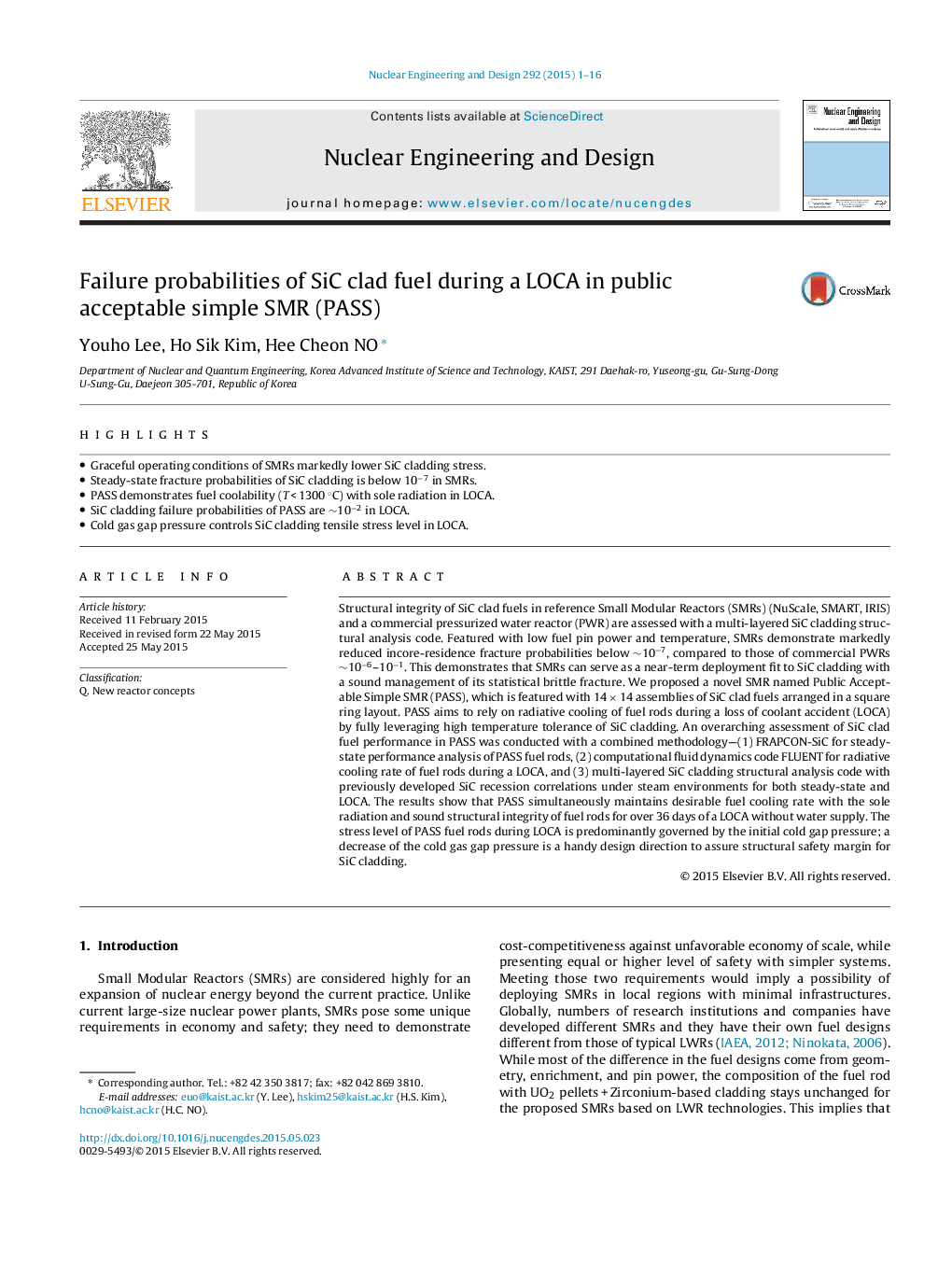| Article ID | Journal | Published Year | Pages | File Type |
|---|---|---|---|---|
| 6761065 | Nuclear Engineering and Design | 2015 | 16 Pages |
Abstract
Structural integrity of SiC clad fuels in reference Small Modular Reactors (SMRs) (NuScale, SMART, IRIS) and a commercial pressurized water reactor (PWR) are assessed with a multi-layered SiC cladding structural analysis code. Featured with low fuel pin power and temperature, SMRs demonstrate markedly reduced incore-residence fracture probabilities below â¼10â7, compared to those of commercial PWRs â¼10â6-10â1. This demonstrates that SMRs can serve as a near-term deployment fit to SiC cladding with a sound management of its statistical brittle fracture. We proposed a novel SMR named Public Acceptable Simple SMR (PASS), which is featured with 14Â ÃÂ 14 assemblies of SiC clad fuels arranged in a square ring layout. PASS aims to rely on radiative cooling of fuel rods during a loss of coolant accident (LOCA) by fully leveraging high temperature tolerance of SiC cladding. An overarching assessment of SiC clad fuel performance in PASS was conducted with a combined methodology-(1) FRAPCON-SiC for steady-state performance analysis of PASS fuel rods, (2) computational fluid dynamics code FLUENT for radiative cooling rate of fuel rods during a LOCA, and (3) multi-layered SiC cladding structural analysis code with previously developed SiC recession correlations under steam environments for both steady-state and LOCA. The results show that PASS simultaneously maintains desirable fuel cooling rate with the sole radiation and sound structural integrity of fuel rods for over 36 days of a LOCA without water supply. The stress level of PASS fuel rods during LOCA is predominantly governed by the initial cold gap pressure; a decrease of the cold gas gap pressure is a handy design direction to assure structural safety margin for SiC cladding.
Related Topics
Physical Sciences and Engineering
Energy
Energy Engineering and Power Technology
Authors
Youho Lee, Ho Sik Kim, Hee Cheon NO,
